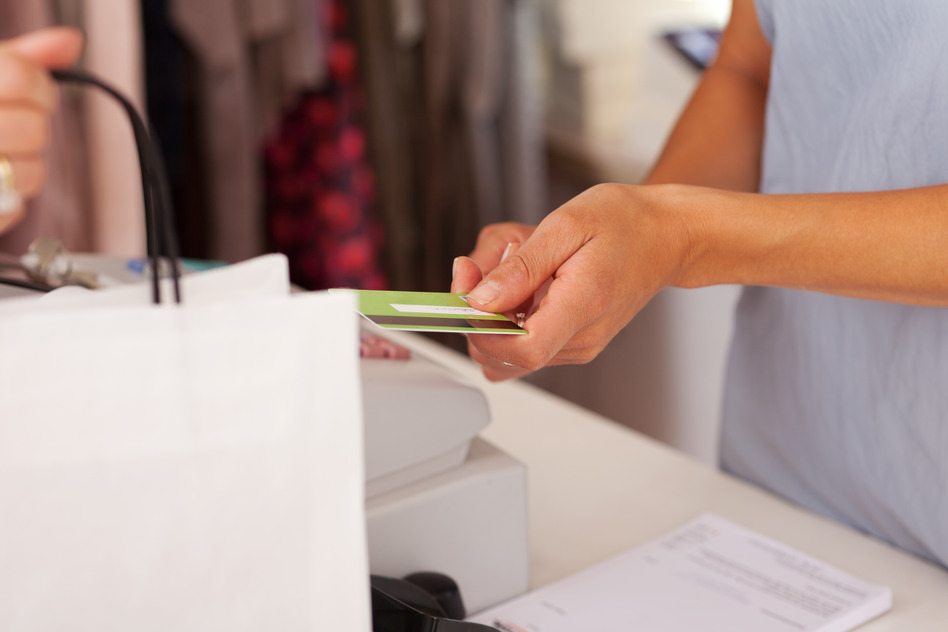When credit cards are used improperly they can destroy your credit scores. However, it is important for consumers to understand that credit cards themselves do not cause credit score damage. Instead, it is the mismanagement of credit card accounts that can lead to problems.
As long as consumers are able to commit to following a smart and responsible usage strategy when it comes to credit cards then there is nothing to fear. Believing that credit cards cause credit and financial problems is the same as believing that pencils misspell words. Credit cards are simply a tool and improper use is 100% voluntary.
What Is Responsible Credit Card Usage?
When it comes to using a credit card you have to focus on two things, and two things only. First you have to make your payments on time, which we cover in another article. But maybe just as important as the online payments are the balances on your cards. Your target for your credit card use should be to have as low of a balance as possible.
If you open a credit card account, only use it for charges that keep you well under the credit limit, and make a consistent habit of paying off the entire account balance every single month, then that credit card is virtually guaranteed to have a positive impact on your credit scores. On the flip side, if you open a credit card account, make charges that approach the credit limit, or fails to pay off the balance in full each month then the credit card is almost certainly going to have a negative impact on your credit scores.
Why Debt-to-Limit Problems Are Significant
It is surprising for many consumers to learn that having large credit card balances actually damages credit scores.In fact, even if a consumer makes every single payment on time his credit scores will still suffer if he keeps large balances on the cards.
Credit scoring models like FICO and VantageScore have metrics that measure the balances on your credit card cards relative to the credit limits on those cards. This metric is called revolving utilization or the debt-to-limit ratio. Roughly 1/3rd of the points in your FICO and VantageScore scores come from the debt related metrics from your credit reports and revolving utilization ratios are a large chunk of those points.
Here is a simple example to demonstrate how revolving utilization ratios are calculated:
If a consumer has a credit card with a $10,000 limit and he owes a balance of $7,500, then the account is 75% utilized. You simply divide the balance by the credit limit, which yields the debt-to-limit ratio. This metric is taken at the individual card level as well as aggregate across all of your credit card accounts.
How to Fix Debt-to-Limit Problems
1. Pay Down Debt
Thankfully, it is possible for consumers to regain any credit score points lost due to a high revolving utilization ratio by bringing down the balances on credit card accounts. If you can afford to scale back your credit card usage and begin aggressively paying off the balances then you will begin to see an immediate credit score improvement. And, it isn’t necessary for you to pay down your credit cards to $0 before you’ll begin to see a boost in your credit score.
2. Consolidate
Sometimes consumers find themselves in debt to the point that paying it down in a timely manner would be challenging or impossible. That does not mean you’re without options. One such strategy for dealing with credit card debt is to pay it off with an installment loan, also referred to as a personal loan
There are two benefits to paying off credit card debt with an installment loan. First, an installment loan is very likely to have a lower interest rate than your credit cards. Second, when revolving credit card debt is paid off with an installment loan, the consumer’s credit scores are going to improve. Credit card debt is considered high risk, while installment loan debt is considered almost benign.
You should only use the installment loan strategy if you’re committed to changing how you use credit cards. You have to get to a point where you never charge more than you can afford to pay off in one month. Otherwise, if you pay off credit cards with an installment loan yet turn around and charge up your credit cards again, then you’re setting yourself up for a credit catastrophe.





If you use more than 60% of your credit card limit, but you pay it off in full each month. How does that effect your credit score?